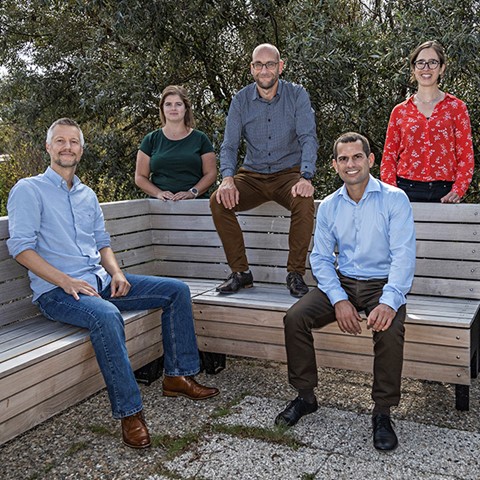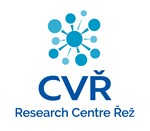Molten Salt Reactor Research Program
- MSR tailored irradiations
- Broad and ambitious public R&D and dedicated research for MSR developers
- From concept design to irradiation experiments
Our Research Program helps bringing MSR technology closer to reality through accurate reproduction of in-use conditions. NRG is your partner for the development and qualification of materials and fuels for Molten Salt Reactors.
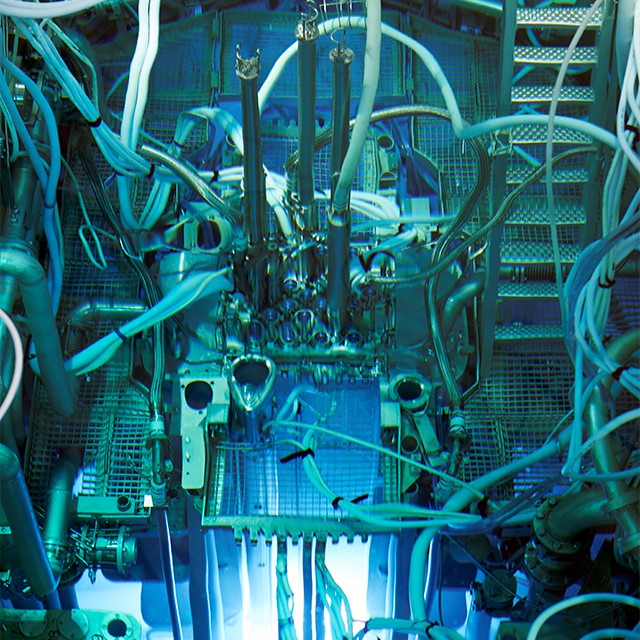
About NRG’s Molten Salt Reactor Research Program
NRG has a long history of testing materials and fuels for current and advanced nuclear reactors for civil nuclear energy generation, using its complete nuclear infrastructure.
With the global resurgence of interest in MSRs, NRG decided to set up an ambitious research program that would target the specific needs of Molten Salt Technologies.
The idea behind the program is to perform experiments that mimic the physico-chemical mechanisms occurring during molten salt reactor operation. Some examples of such phenomena are the corrosion of metallic components in radioactive molten salt, the weakening of structural parts due to a combination of temperature and radiation, deposition of salt on walls of pipes (f.i. clogging), formation of gases, treatment of residual (waste) products and much more.
The projects of the program are coordinated from Petten, where most of the activities are performed. To complement our capabilities, diverse collaborations were established with a number of expertise centers, such as: the Joint Research Centre (JRC) of the European Commission, the Technical University in Delft (Netherlands), CV Rez (Czech Republic) and SINAP (China).
The MSR program is developed within the R&D framework of the Dutch government to reduce CO2 emissions and funded by the Dutch Ministry of Economic Affairs. Additional funding comes from the European Horizon 2020 Project SAMOSAFER, under coordination of the TU Delft.
Projects of the Molten Salt Research Program
The program is built from a diverse set of technically challenging projects. Here are some highlights.
Salient-01
SALIENT-01 was the world’s first MSR-specific fuel salt irradiation experiment in 45 years and has gained notoriety in the MSR community.
The main objective of SALIENT-01 is to acquire experience with performing molten salt irradiation, including the design of a rig containing liquid fuel and the handling of fresh and irradiated fuel salts in inert environments.
In a nutshell, mixtures of lithium fluoride and thorium fluoride salts contained in graphite crucibles are exposed to high neutron and gamma radiation levels in the High Flux Reactor in Petten. After generating burn-up in the reactor, the samples are inspected for material compatibility and fission product behavior.
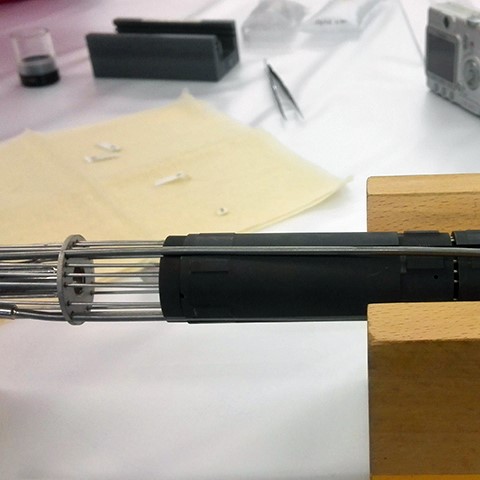
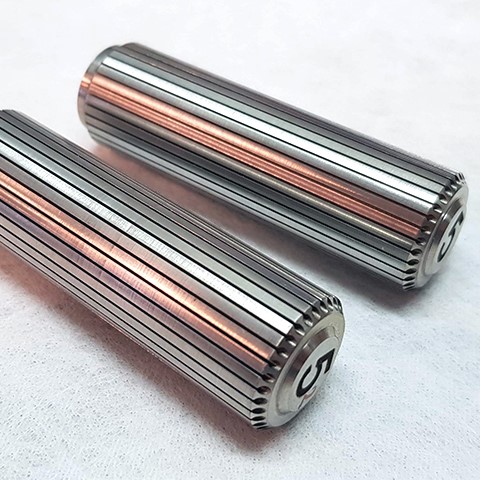
Salient-03
SALIENT-03 is the successor of the SALIENT-01 experiment. This project focuses on the determination of corrosion rates of structural materials when they are exposed to molten fuel salts under irradiation, and introduces in-pile measurement of fission gas release. Lessons learned from the SALIENT- 01 project are incorporated in the design.
The SALIENT-03 experiment is performed in cooperation with JRC-Karsruhe, which produces the thorium salts.
Enickma
Nickel-based materials are foreseen to be used in MSR systems for their high corrosion resistance. Nickel is however sensitive to thermal neutron irradiation, producing helium which may consequently weaken the material. The ENICKMA project is performed to study the effect of helium embrittlement in nickel-based materials such as Hastelloy N, that are candidates for use in Molten Salt Reactors.
100 tensile, stress relaxation and low cycle fatigue samples are irradiated at MSR-relevant temperatures. Test results for the irradiated materials are then compared with results for reference samples.
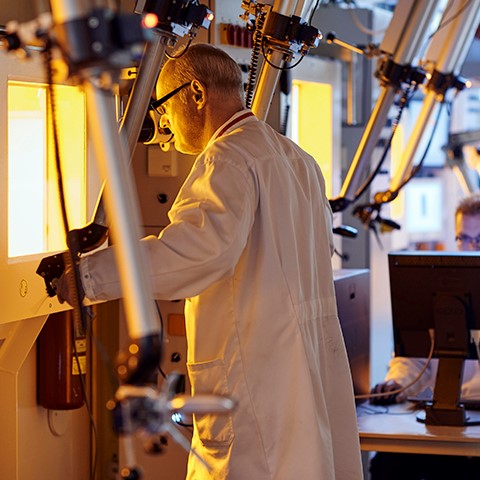
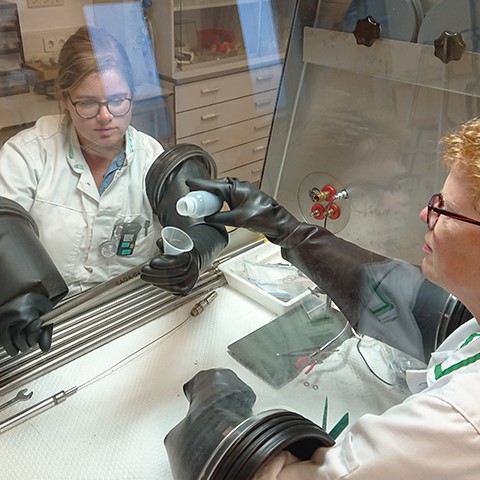
SAGA
The objective of SAGA is to study the gas formation that can take place if fluoride salt specimens are exposed to gamma (and alpha and beta) radiation at temperatures up to about 150 oC. This phenomenon may represent an issue when molten salt waste is temporarily stored before waste treatment and final disposal.
The re-usable SAGA facility contains 6 gastight sample holders attached to pressure sensors. The pressure sensors register pressure build-up due to gas formation while the facility is bombarded with gamma rays using spent fuel from the HFR Petten.
Salt Waste Treatment
The Lumos waste project anticipates the need for safe and secure disposal of the radioactive waste that is generated during irradiation of fuel-bearing salts in a molten salt reactor.
For this purpose NRG consults the Dutch central organization for radioactive waste (COVRA) to determine the criteria for acceptance of this type of waste. generated during experiments in the HFR. Complete characterization of the composition of the waste is a prerequisite. The process that is currently explored, includes stripping of the most aggressive agents from the waste by chemical separation, followed by vitrification and cementation of the resulting waste streams.
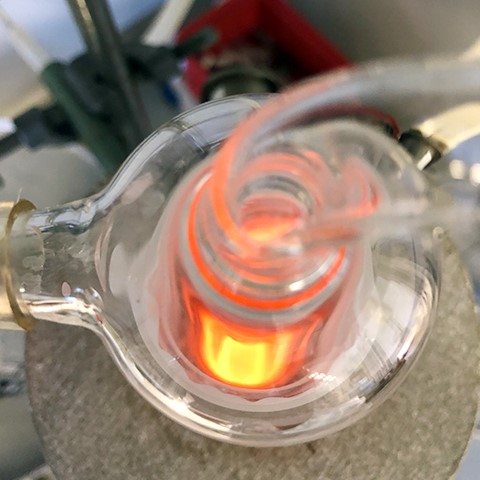
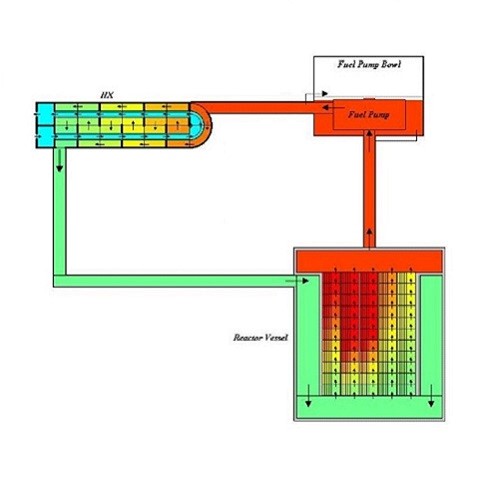
Simulation cooling system
For design support and safety analyses one should know the molten salt flow and heat transport in the reactor vessel and/or the cooling system. For this, so-called thermal-hydraulics system codes were used. The nuclear reactor is modelled in such codes by ways of 0- or 1-dimensional elements. Originally, such codes were developed for water cooled reactors.
The simulation code needs to be adapted for molten salt reactors. Besides, validation is required to gain trust in the simulation outcomes. The SPECTRA code of NRG has been adapted for the specific and unique requirements put forward by modelling molten salt reactors. The following models are now available in the code:
Besides, the flow in the reactor vessel demands 3-dimensional modelling. For that reason, NRG started to prepare also a 3-dimensional tool for simulation of molten salt reactors.
Molten Salt Reactor FAQ
You have questions about Molten Salt Reactors. We have combined all frequently asked questions... and answered them.
More information?
We are happy to tell you more. Tell us your question and we will contact you.
Meet the irradiation team
